Stardust Announcements and New Data
Cometary Tile Removal
The Curation staff continues to remove all of the aerogel tiles remaining in the cometary tray. We had paused this activity in 2019 due to building construction and the pandemic, but we have now restarted the work. Most recently, cell C2024,0 was removed. At this time 75%, of the cometary tiles have been removed from the tray.
Availability of cometary tracks characterized by X-ray Computed Tomography and Synchrotron X-ray Fluorescence
The Curation staff recently received 11 complete or nearly complete Stardust Mission cometary tracks originally allocated to Denton Ebel, of the American Museum of Natural History. Denton obtained X-Ray Computed Tomography (XRCT) maps of these tracks, and Synchrotron X-ray Fluorescence (SXRF) maps of a subset of them. While we are still performing data reduction on the XRCT and XRF mapping, the tracks are now available for allocation in whole or in part, joining others that had previously been analyzed by Denton and returned to JSC. We are loading the XRCT and XRF maps into the Stardust Curation database as they become ready.
The recently returned tracks are:
- C2012,1,102,0,0
- C2012,7,131,0,0
- C2028,19,197,0,0
- C2028,20,197,0,0 (a new portion of track 197, which split into two pieces)
- C2035,2,152,0,0
- C2065,1,117,0,0
- C2088,1,169,0,0
- C2103,10,143,0,0
- C2103,21,166,0,0
- C2112,1,151,0,0
- C2117,2,163,0,0
- C2126,2,68,0,0
There are already images of these tracks in the JSC ARES Stardust database. Below (Figure 1) are recent transmitted light images of some of the returned tracks.
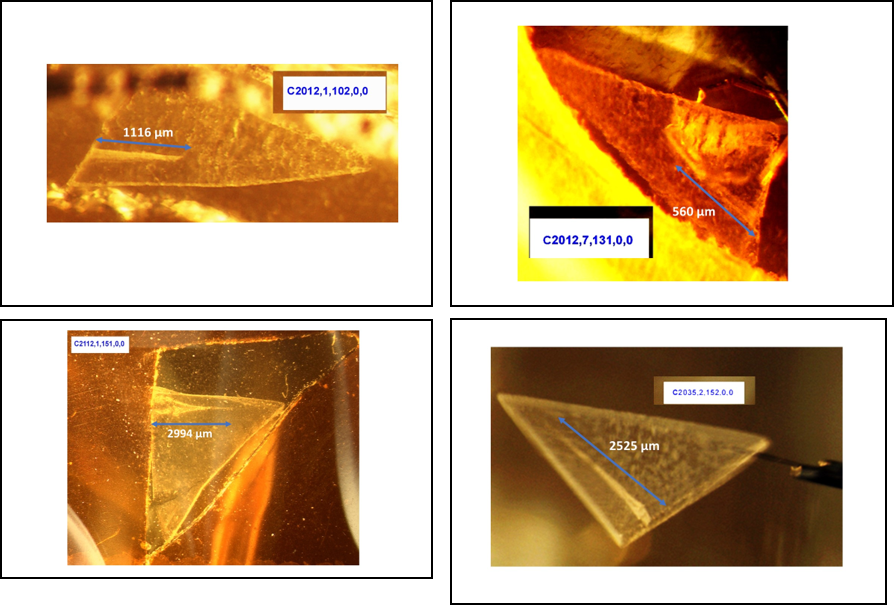
Figure 1: Transmitted light images of tracks recently returned to the collection, and now available for re-allocation.
We requested a description of the XRCT and SXRF measurements from Denton Ebel, which he provided below.
From Denton Ebel:
The American Museum of Natural History has been imaging comet Wild 2 samples since 2007. Indeed, they were applying synchrotron computed tomography (S-CT) to analog samples prior to sample return in 2006. Over 15 years, they have applied laser scanning confocal microscopy (LSCM, Figs. 1 and 2), synchrotron X-ray fluorescence (SXRF, Fig. 3), and stereo pair SXRF to 18 whole or partial tracks in aerogel. LSCM data is typically 80 x 80 nanometers by ~300 nm in the optic axis dimension [1,2]. Much of this data has been corrected by application of theoretical and/or experimental point spread function information based on aerogel manufactured with embedded small beads [3]. LSCM yields impressive 3D maps displayable in super-cool visualizations. Meaningful results can be extracted from these data [4].
Combined with 2D SXRF maps at 2 micron/pixel resolution and stereo pairs at 15-20° tilt separation, these data provide the potential to identify specific subgrains in tracks that may be important to harvest and analyze at extremes of spatial, chemical and isotopic resolution [5].
These data total about 8 TB and cannot be satisfyingly displayed in 2D media. Ebel Figures 1 and 2 are projections onto a plane of the 3D intensity of reflectance from the many focal planes in the sample, which result in the 3D LCSM volume. Densification of aerogel during impact can be seen in many image stacks. Efforts are under way to make all these data available to the community, to enable deeper investigation of potentially important grains within the Wild 2 sample suite. The AMNH data could, for example, be used to model the 6 km/sec impacts of these comet grains into aerogel and to deduce their original properties [5].
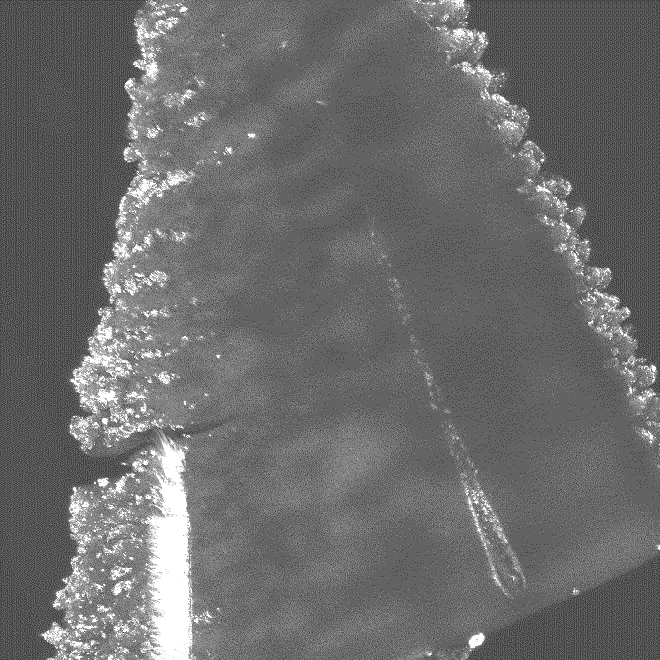
Ebel Figure 1: Greyscale LCSM projection, Track #82 (8 Bit, 0.450μm/pxl). Brighter areas indicate higher reflectance. Track #82 extends nearly to the top of the field of view.
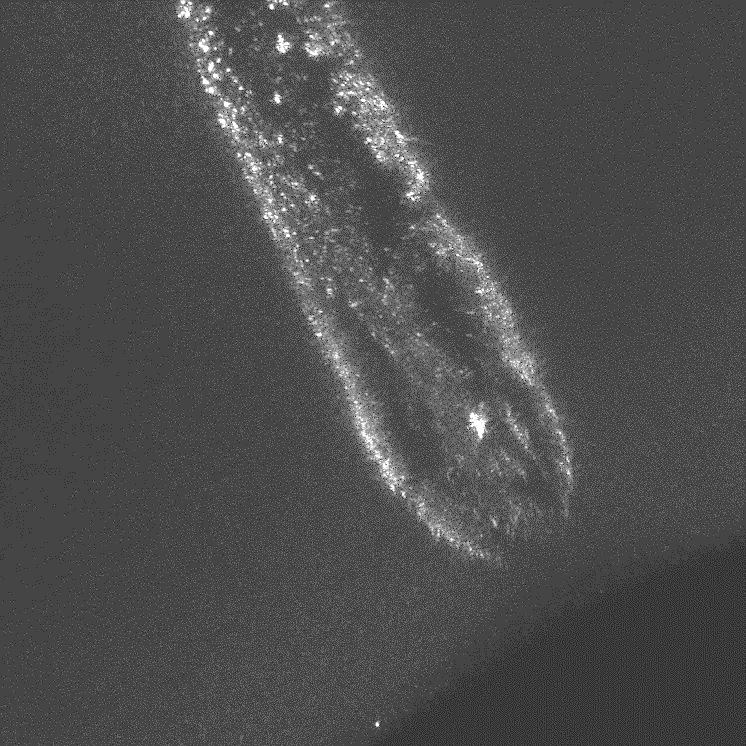
Ebel Figure 2: Greyscale LCSM projection, Track #82, Entry Closeup (8 Bit, 0.065μm/pxl). Banding on the track indicates possible rifling motion during impact.
References
[1] Ebel D.S., Greenberg M., Rivers M. L. and Newville M. (2009) 3-dimensional Textural and Compositional Analysis of Particle Tracks and Fragmentation History in Aerogel. Meteoritics and Planetary Science 44: 1445-1463.
[2] Greenberg M. and Ebel D. S. (2010) Laser scanning confocal microscopy of comet material in aerogel. Geosphere 6: 515-523.
[3] White A. J. and Ebel D. S. (2015) Imaging samples in silica aerogel using an experimental point spread function. Microscopy and Microanalysis, 21:172-178. doi:10.1017/S1431927614013610.
[4] Greenberg M. and Ebel D.S. (2012) Properties of Original Impactors Estimated from Three-Dimensional Analysis of Whole Stardust Tracks Meteoritics and Planetary Science 47: 634-648.
[5] White A. J., Ebel D. S., and Greenberg M. (2014) Nondestructive Three-Dimensional Confocal Imaging and SXRF of Whole Stardust Tracks in Aerogel. Lunar and Planetary Science XLV, Abs. #2292.
Note from the Curator:
As mentioned above, we are loading the returned XRCT and SXRF data that have been processed into the Stardust Curation Database. Examples of this are SXRF maps of the track mentioned above by Denton, Track 82 (Figure 2 & 3).
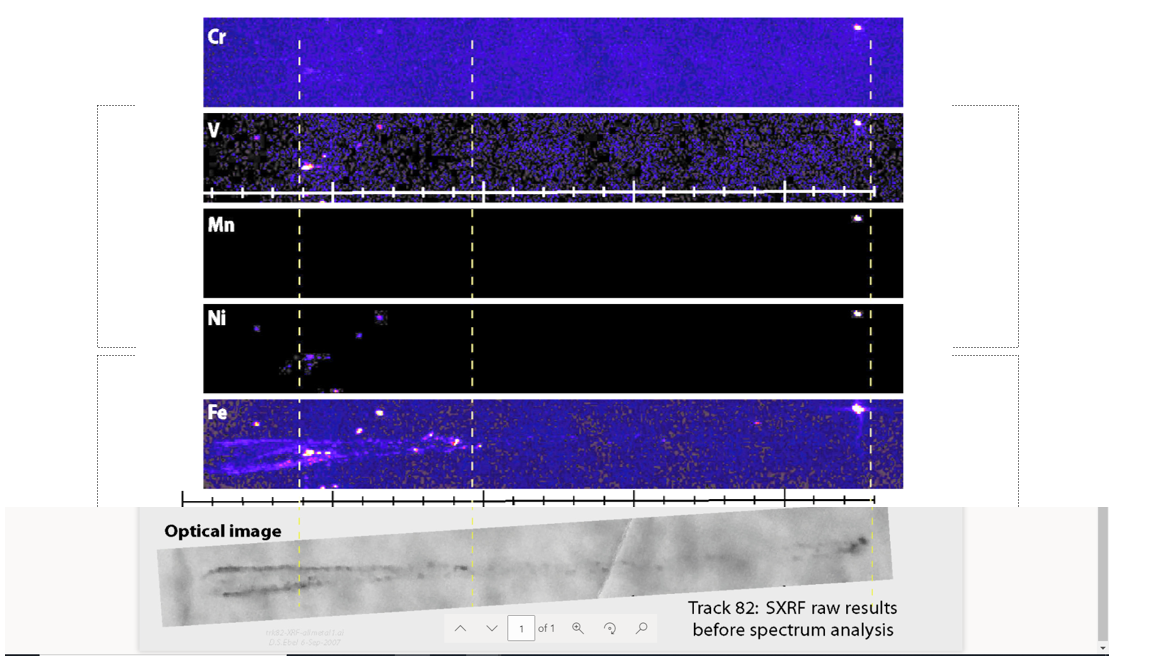
Figure 2: SXRF maps of Track 82 for Cr, V, Mn, Ni, and Fe. Data by Denton S. Ebel, Michael Greenberg and Matthew Newville.
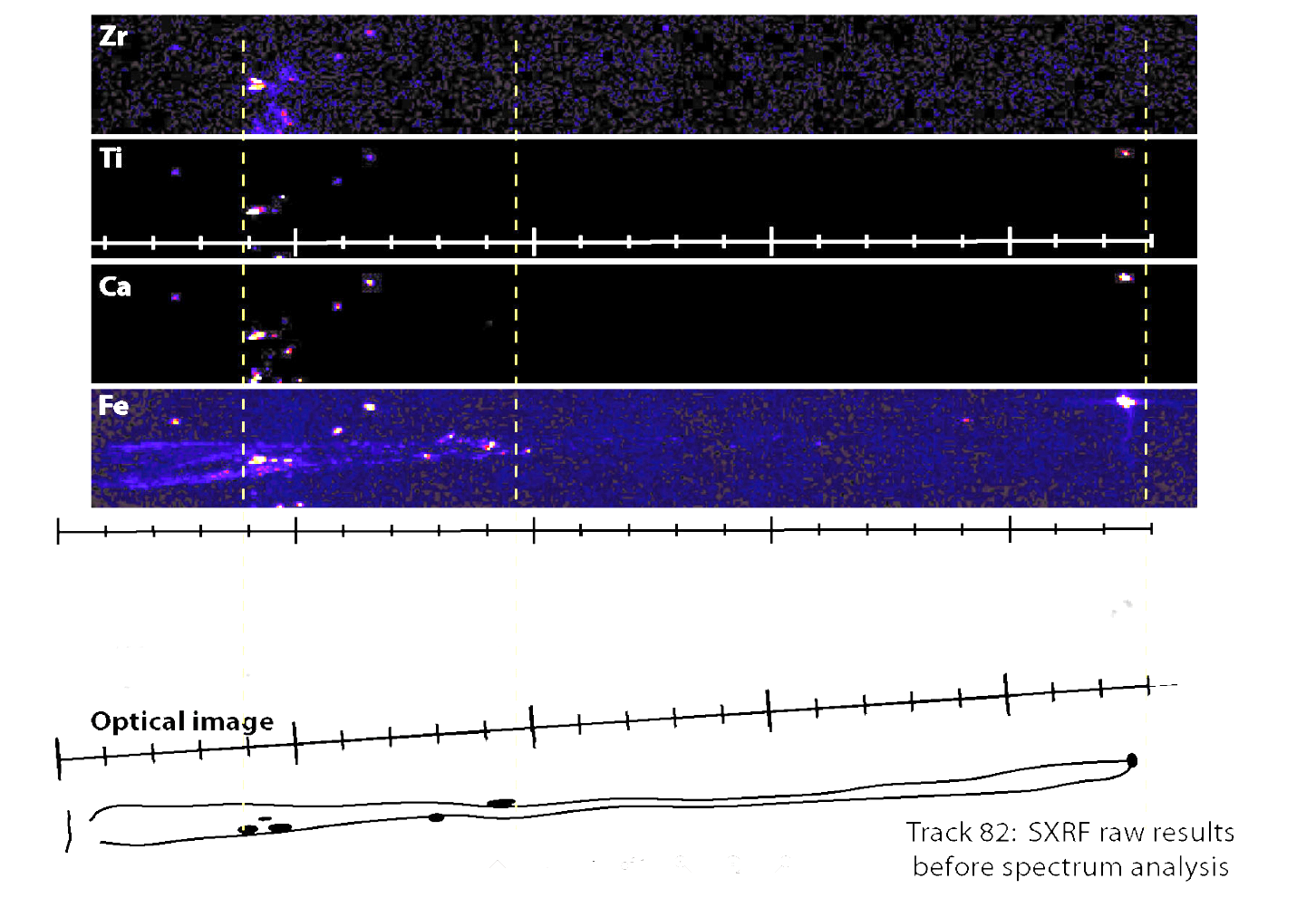
Figure 3: SXRF maps of Track 82 for Zr, Ti, Ca, and Fe. Data by Denton S. Ebel, Michael Greenberg and Matthew Newville.
